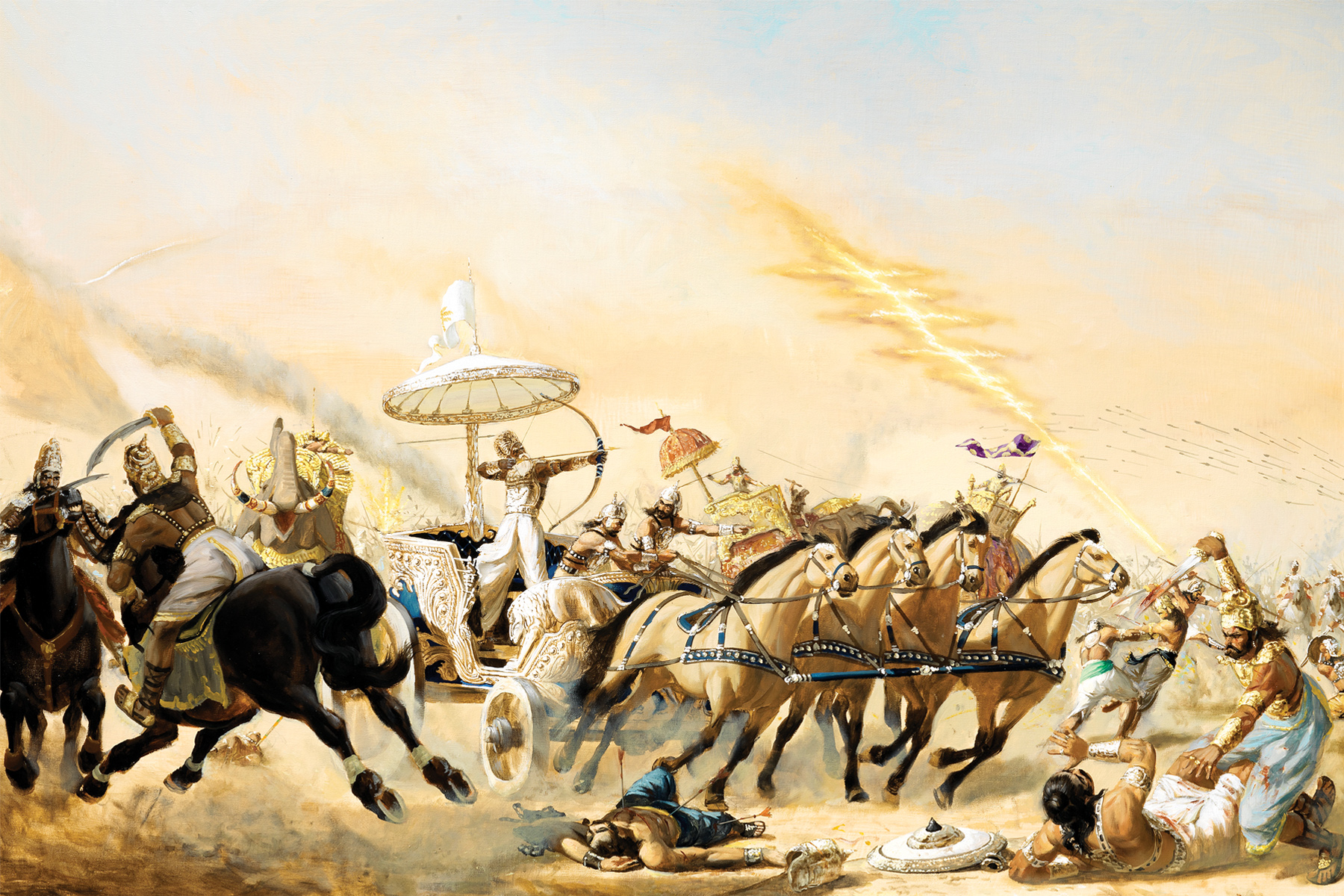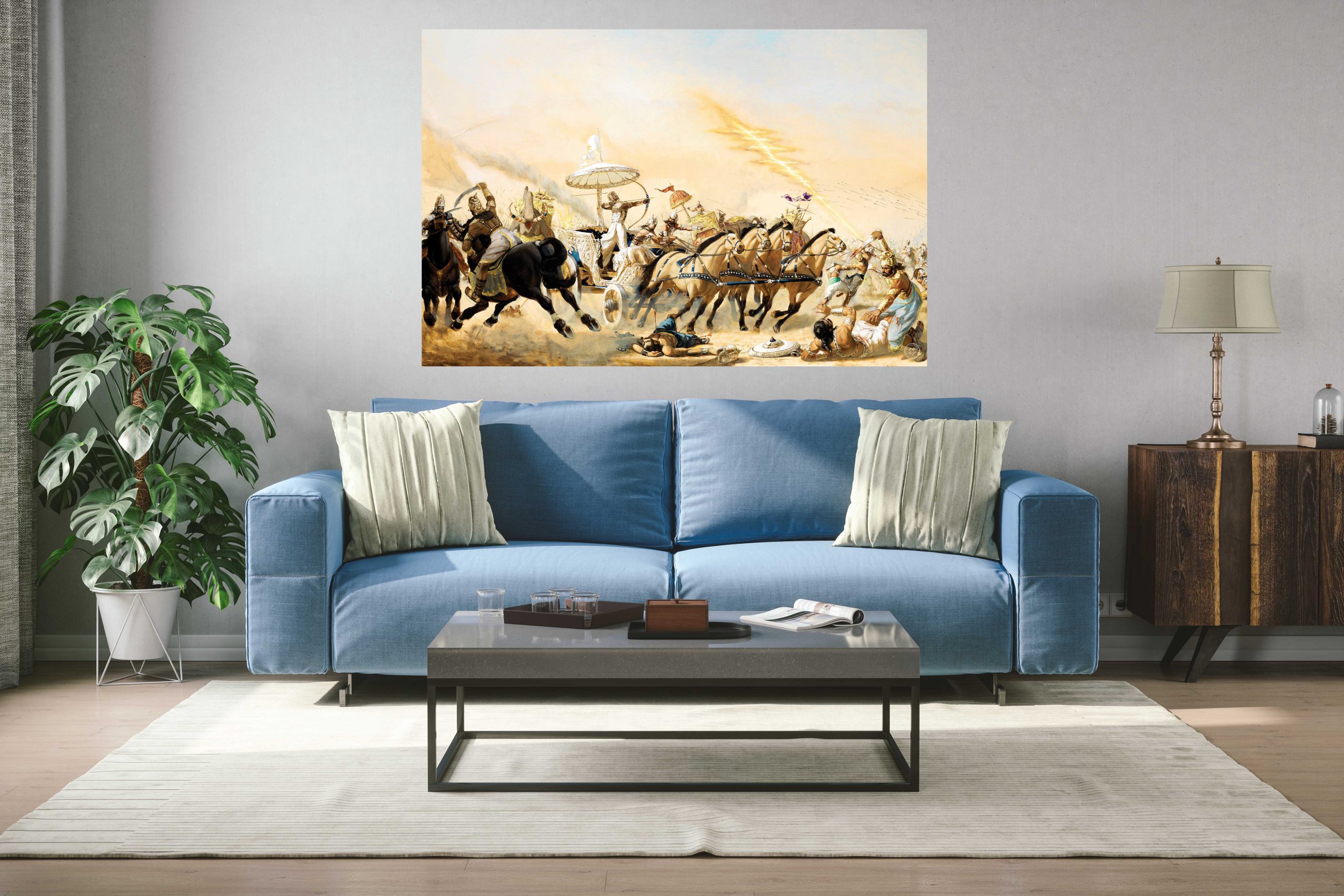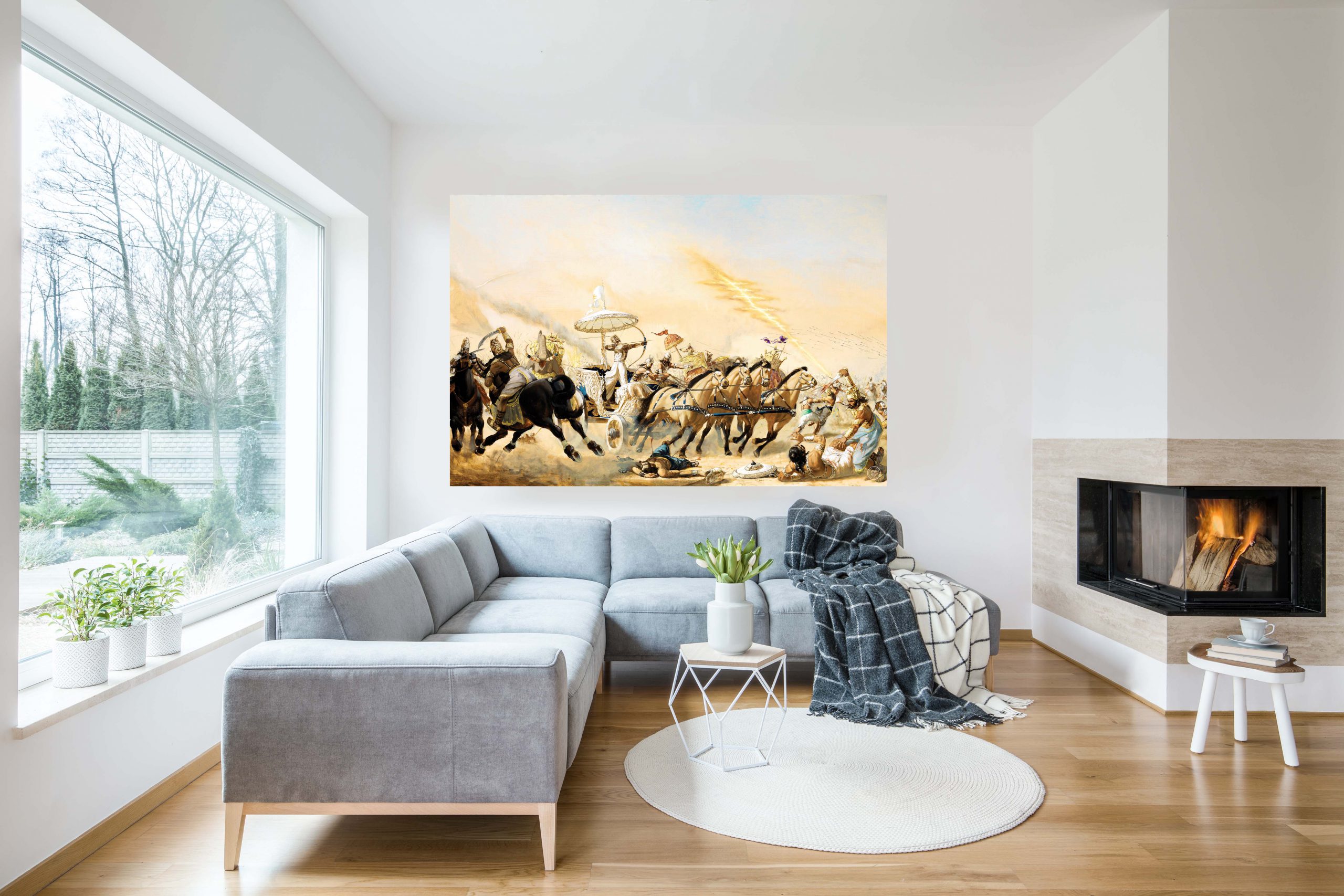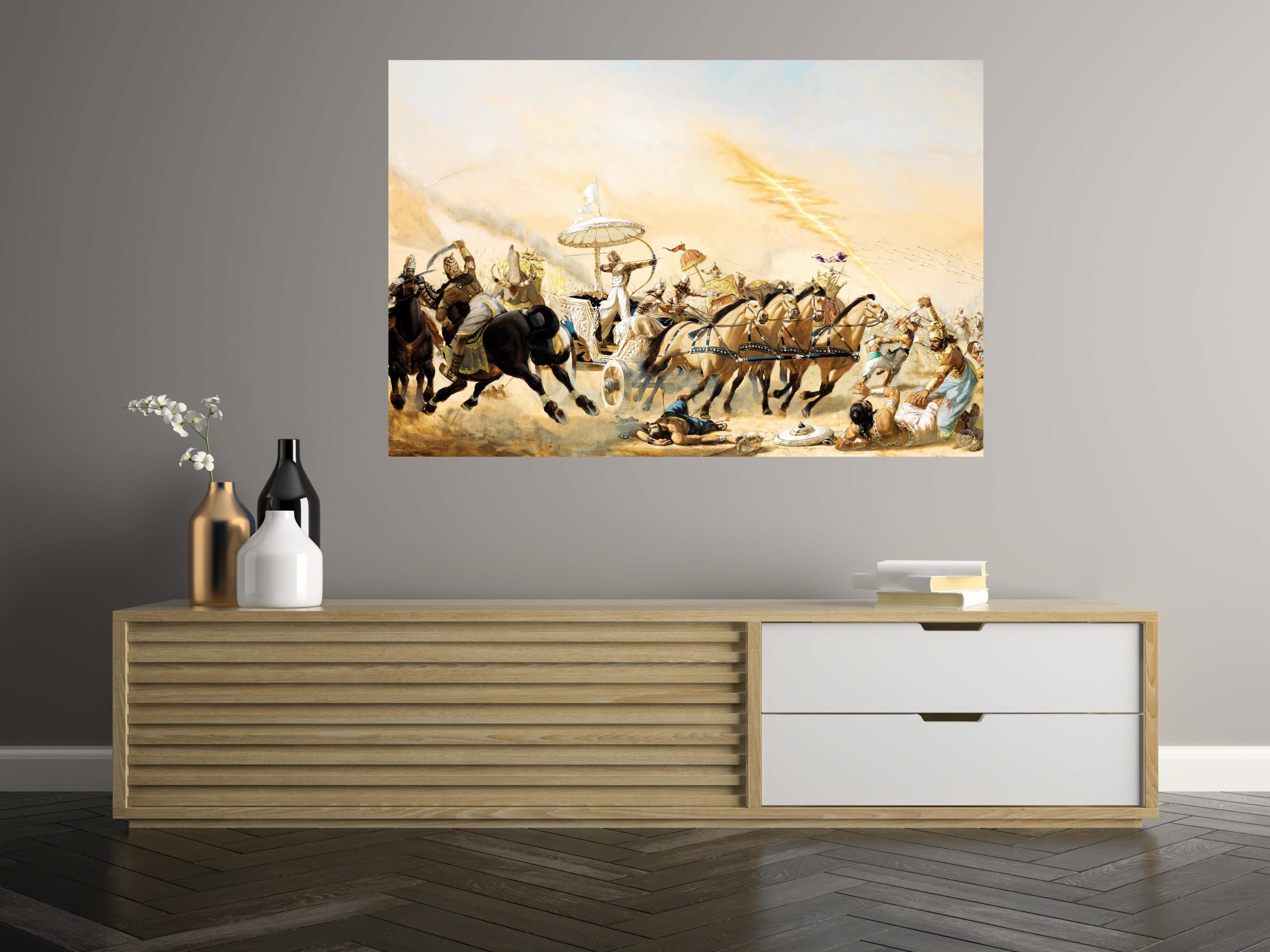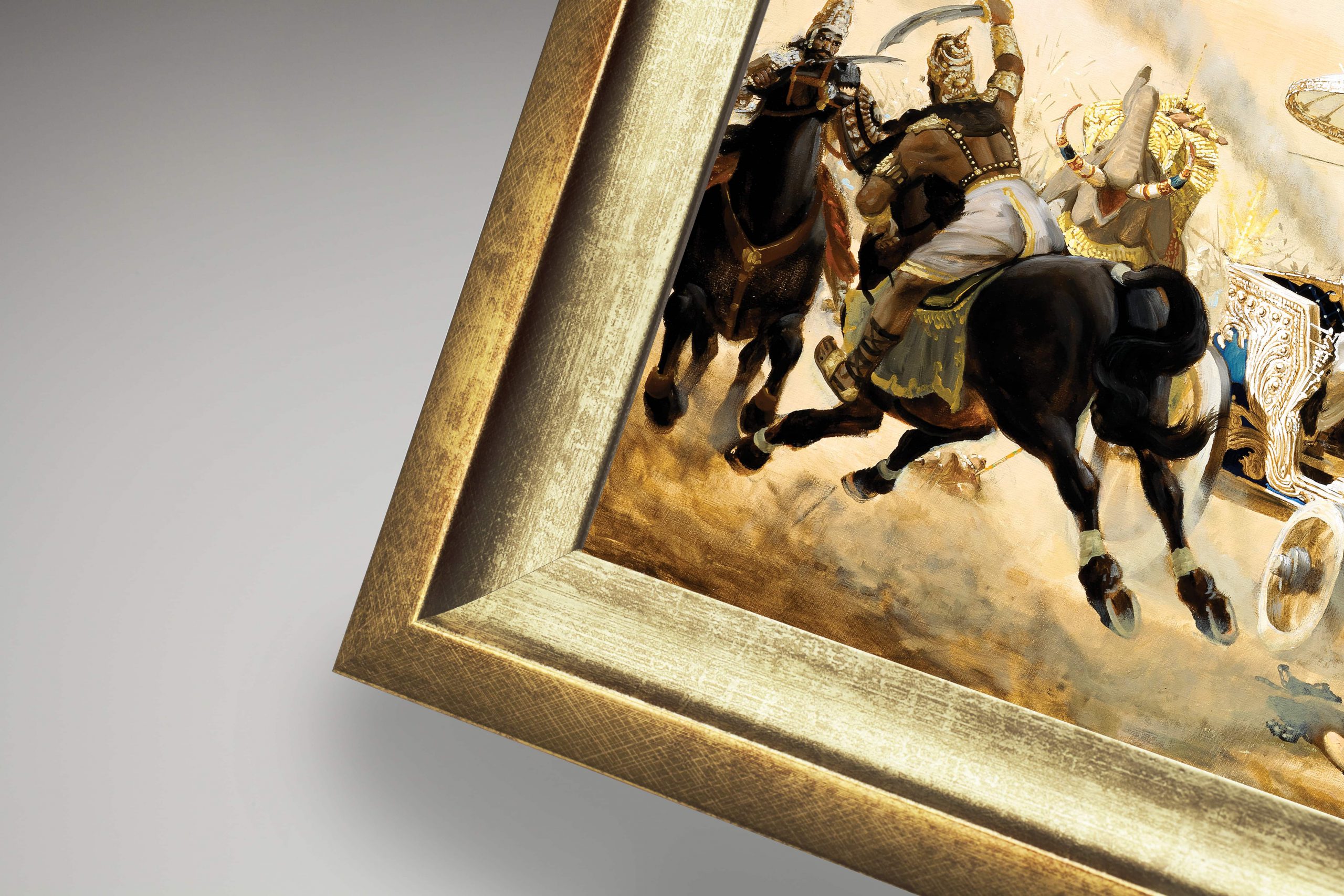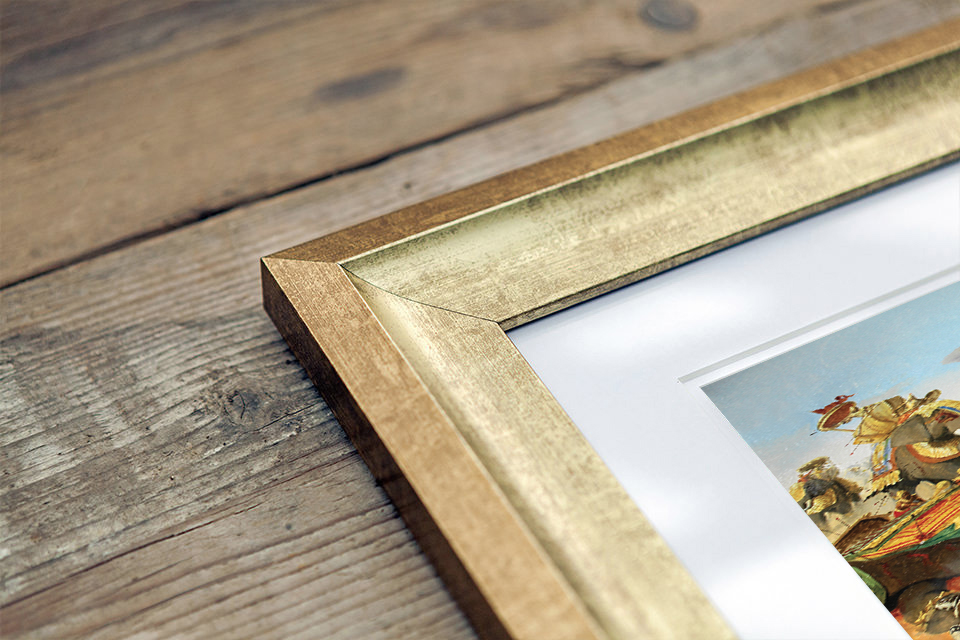Mahabharata – The Rush of the Hero
Bhismadeva, also called Pitamaha – the patriarch, is an oxymoron between old age and his surprising agility and superhuman strength. Fate and code of honour had decided that he was to stand against the Pandavas. Even as he was fighting them in his heart he was on their side.
£ 165.00 – £ 755.00
More like this
-
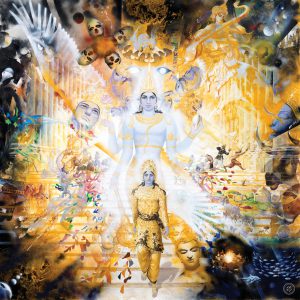
Mahabharata – The Universal Form – Vishva Rupa
£ 165.00 – £ 640.00 BUYIn two moments of the Mahabharata Lord Krishna showed the Vishva Rupa revealing his Divine Nature as Vishnu, the Supreme God. In this painting the artist tries to elaborate His first performance of the so called Universal Form. It is a complex vision explained in an entire chapter of the Bhagavad Gita. The Supreme Being expands in infinite dimensions and entities. The immensity of the universe and the complexity of its constituents are impossible to understand in full. The resulting unusual perception is a network of chaotic and apocalyptic elements, viewed from multiple angels and unusual perspectives as Lord Krishna manifests His Universal Form for the first time.
-
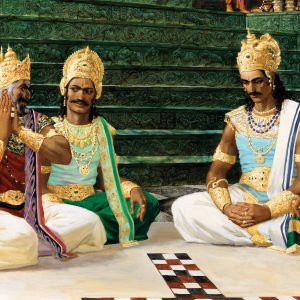
Mahabharata – The Pandavas were cheated
£ 155.00 – £ 770.00 BUYAt the bottom of the steps to the throne, in the middle of the royal room, a tremendous contest happened: it decided the destiny of the Pandava brothers and triggered the tragic event of the Kurukshetra war. The Pandavas are defrauded of royal rights and all belongings by their closest relatives with a rigged game of dice.
Regal dresses hide evil and dishonest personalities. The artist showed mischievous and sinister expressions on the faces of the devious uncle, Shakuni – an expert in the game of dice, and Duryodhana. He wanted to show, expressively, the two very opposing moods of the moment. Arjuna’s resignation, as he knows they are about to lose the contest, and King Yudhishthira’s display of anxiety, for the last throw in the game, where he knows he will lose everything.
-
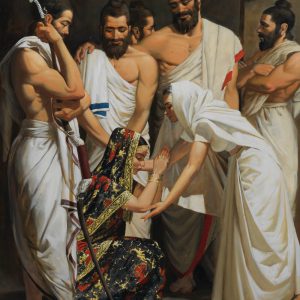
Mahabharata – Kunti and Draupadi
£ 160.00 – £ 795.00 BUYAn intimate simplicity characterises the meeting between Mother Kunti and Draupadi. The painting is devoid of any decorative superfluity. Light is the protagonist of this painting. Taking vantage of the plot in which the Pandavas and their Mother Kunti are in disguise as Brahmanas. They were dressed simply and in white. The white drapery dominates all the lighting, framing the rich black regal sari of Princess Draupadi.
Although Maharaja Draupada’s daughter was elegantly dressed she submits herself to the role of respecting her future mother in law. She was promised to be the wife of the five Pandava brothers, but first she needed to be accepted by their mother!

